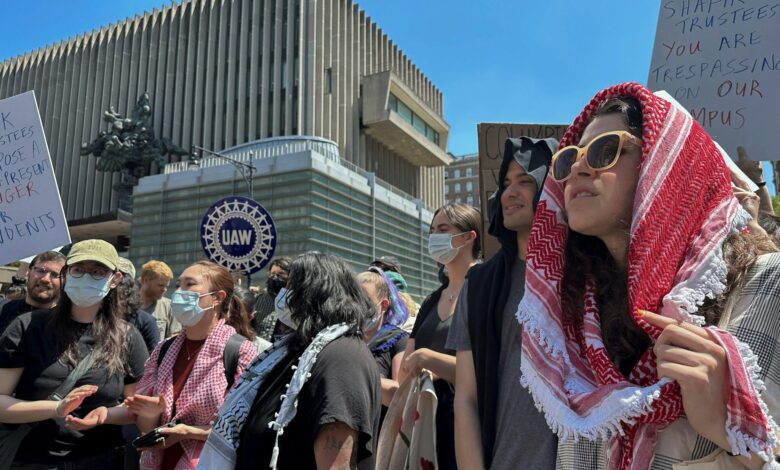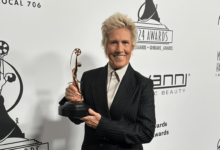Columbia University Protests: A History of Change and Activism

Columbia University, one of the most prestigious institutions in the United States, is not only known for its academic excellence but also for its long history of activism and student protests. Over the years, Columbia has been the epicenter of many movements that have sought to bring about social, political, and academic change. The Columbia University protests have left an indelible mark on both the university and the broader society, showing the power of student voices in shaping the future.
This article delves deep into the history of Columbia University protests, exploring their causes, outcomes, and the role they have played in pushing for reform. The protests at Columbia have served as a symbol of student activism, showing how students can challenge the status quo and bring about meaningful change.
What Are Columbia University Protests?
Columbia University protests refer to the series of demonstrations, sit-ins, and rallies held by students, faculty, and community members at Columbia University over the years. These protests have been driven by a variety of issues, from opposing U.S. foreign policy and advocating for racial justice to demanding university reforms and better working conditions for staff.
These protests reflect the strong sense of activism among Columbia students, who have consistently used their platform to advocate for social and political change. Each protest has had its own unique goals, but all of them share a common theme: the desire for justice, equality, and progress.
The Role of Student Activism at Columbia University
Student activism has been an integral part of life at Columbia University. From its founding in 1754, Columbia has fostered a culture of intellectual inquiry and debate. This culture has often translated into a commitment to social and political activism, with students using their education to challenge systems of power and inequality.
The Columbia University protests have been significant because they represent a tradition of student engagement in critical issues affecting not only the university but also the world. Students at Columbia are encouraged to question authority, think critically about societal issues, and take action when necessary. As a result, protests have become a way for students to express their concerns and demand change.
Key Moments in Columbia University Protest History
Throughout its history, Columbia University has been the site of many important protests. These protests have had a profound impact on the university and, in some cases, have even influenced national and global movements. Below are some of the most notable moments in the history of Columbia University protests:
- 1968 Protests Against the Vietnam War and Gym Construction
The 1968 protests at Columbia University are perhaps the most famous in the university’s history. These protests were sparked by two main issues: the university’s involvement in military research during the Vietnam War and the construction of a gym in Morningside Park, which was seen as a symbol of racial injustice.
Students were outraged by the university’s ties to the war, as well as the decision to build a gym that would disproportionately benefit the predominantly white university community while marginalizing the mostly Black residents of Harlem. The protests culminated in the occupation of several university buildings, with students demanding an end to the university’s involvement in the war and the cancellation of the gym project.
The protests drew national attention, leading to a major police crackdown and widespread media coverage. Ultimately, the university agreed to halt the gym construction and re-evaluate its policies, marking a victory for the protesters.
- 1985 Anti-Apartheid Protests
In the 1980s, Columbia University became a focal point for the global movement against apartheid in South Africa. Students demanded that the university divest from companies doing business with the apartheid regime. The Columbia University protests during this time were part of a larger wave of anti-apartheid activism across U.S. college campuses.
The protests took the form of sit-ins, rallies, and demonstrations. In 1985, students occupied the main administration building, demanding that Columbia cut financial ties with companies supporting apartheid. After months of protests and negotiations, Columbia agreed to divest, becoming one of the first major universities to take this step.
The victory at Columbia helped build momentum for the larger anti-apartheid movement, showing how student activism could influence international politics.
- 2020 Protests Against Police Brutality
In the wake of the killing of George Floyd and the resurgence of the Black Lives Matter movement, Columbia University students once again took to the streets. In 2020, protests against police brutality and systemic racism swept across the nation, and Columbia was no exception.
Students at Columbia organized protests to demand that the university cut ties with the New York Police Department (NYPD) and address issues of racial inequality on campus. These Columbia University protests were part of a larger movement calling for justice, accountability, and reform of policing practices in the U.S.
The protests led to important conversations about race and equity at Columbia, and the university committed to reviewing its policies and taking steps toward greater inclusivity.
Why Do Students Protest at Columbia University?
The reasons behind Columbia University protests are as diverse as the student body itself. However, several key issues have consistently driven students to protest:
- Social Justice: Many protests have centered on issues of racial, economic, and gender inequality. Students at Columbia have a long tradition of fighting for civil rights, from opposing segregation in the 1960s to supporting the Black Lives Matter movement in recent years.
- University Policies: Students often protest decisions made by the university administration, especially when they feel that these policies are unjust or out of touch with the needs of the student body. Issues like tuition hikes, labor rights for staff, and university investments have been the focus of many protests.
- Global Issues: Columbia students are deeply engaged with global events. Protests against the Vietnam War, apartheid in South Africa, and U.S. foreign policy have all been key moments in the university’s protest history.
- Environmental Concerns: In recent years, protests have also focused on environmental issues, with students demanding that the university take stronger action to combat climate change and divest from fossil fuels.
The Impact of Columbia University Protests on Society
The Columbia University protests have not only affected the university but have also had a broader impact on society. Many of the issues raised by Columbia students have resonated with larger movements, and in some cases, these protests have helped shape national policy.
For example, the 1968 protests were part of a larger wave of anti-war activism that ultimately led to greater public opposition to the Vietnam War. The anti-apartheid protests of the 1980s contributed to the global movement that eventually brought down the apartheid regime in South Africa.
Moreover, Columbia protests have often served as a model for student activism at other universities. The strategies used by Columbia students—such as sit-ins, building occupations, and peaceful demonstrations—have been adopted by activists around the world.
How Columbia University Responds to Protests
Over the years, Columbia University’s response to protests has evolved. In the past, the university has sometimes responded with force, as seen during the 1968 protests when police were called in to remove students from occupied buildings. However, in more recent years, the university has adopted a more measured approach, engaging in dialogue with protesters and working to address their concerns.
The administration often forms committees to review student demands and implement changes where appropriate. For example, in response to the 2020 protests, the university pledged to take concrete steps to address issues of racial inequality on campus.
While the relationship between protesters and the administration can sometimes be tense, Columbia University recognizes the importance of student activism and has made efforts to create a space where students can voice their concerns.
The Future of Student Activism at Columbia
Looking ahead, student activism at Columbia University is likely to continue. As new issues emerge—whether related to climate change, economic inequality, or global conflicts—Columbia students will remain at the forefront of the fight for justice and equality.
The Columbia University protests have shown that students can be a powerful force for change. With their passion, creativity, and commitment to social justice, Columbia students will continue to use their platform to push for a better, more equitable world.
Conclusion
The Columbia University protests are a testament to the power of student activism. Over the years, these protests have addressed a wide range of issues, from racial injustice and global conflicts to university policies and environmental concerns. Through their activism, Columbia students have not only changed their university but have also made a lasting impact on society.
As we reflect on the history of Columbia University protests, it is clear that the spirit of activism remains alive and well. Columbia students are committed to using their voices to advocate for change, and their protests serve as
You may also read
Jones Financial Planning for Charities: A Comprehensive Guide





